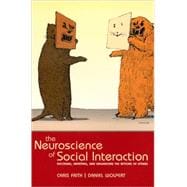
Note: Supplemental materials are not guaranteed with Rental or Used book purchases.
Purchase Benefits
What is included with this book?
| List of Contributors | p. ix |
| Introduction: the study of social interactions | p. xiii |
| Biological motion: decoding social signals | |
| Electrophysiology and brain imaging of biological motion | p. 1 |
| Teleological and referential understanding of action in infancy | p. 23 |
| Development and neurophysiology of mentalizing | p. 45 |
| Mathematical modelling of animate and intentional motion | p. 77 |
| Mirror neurons: imitating the behaviour of others | |
| What imitation tells us about social cognition: a rapprochement between developmental psychology and cognitive neuroscience | p. 109 |
| Action generation and action perception in imitation: an instance of the ideomotor principle | p. 131 |
| The manifold nature of interpersonal relations: the quest for a common mechanism | p. 159 |
| Imitation as behaviour parsing | p. 183 |
| Computational approaches to motor learning by imitation | p. 199 |
| Mentalizing: closing the communication loop | |
| Detecting agents | p. 219 |
| Facial expressions, their communicatory functions and neuro-cognitive substrates | p. 241 |
| Models of dyadic social interaction | p. 265 |
| Dressing the mind properly for the game | p. 283 |
| A unifying computational framework for motor control and social interaction | p. 305 |
| Index | p. 323 |
| Table of Contents provided by Rittenhouse. All Rights Reserved. |
The New copy of this book will include any supplemental materials advertised. Please check the title of the book to determine if it should include any access cards, study guides, lab manuals, CDs, etc.
The Used, Rental and eBook copies of this book are not guaranteed to include any supplemental materials. Typically, only the book itself is included. This is true even if the title states it includes any access cards, study guides, lab manuals, CDs, etc.